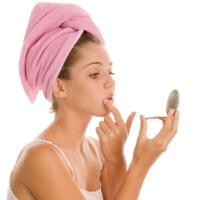
Fact or fiction? The top acne myths get debunked by local skincare experts!
Acne is nobody’s friend. And it can strike when you least expect it. Specializing in the clinical treatment of breakout-prone skin, All About You Medspa in Tempe, AZ debunks the top five acne myths and offers some practical advice about this challenging skin issue.
- Acne is caused by dirt. Acne is a complex disease of the follicle and is unrelated to dirt. The bacteria responsible for inflamed acne breakouts are Propionibacteria Acnes. Blackheads are not attributable to dirt, but rather to pathology of the follicle and buildup of dead skin cells and oil. Blackheads can become worse with harsh scrubbing and should be removed by a professional to prevent scarring and broken capillaries. The addition of topical retinoids also prevents the formation of new blackheads.
- The more you wash your face, the less acne you’ll have. If acne is not caused by dirt, it stands to reason that acne cannot be washed away. The makers of abrasive acne scrubs would have you believe that a harsh wash is a treatment for acne; a concept that is not supported by studies. Of course, this is not to suggest that washes cannot help acne, as those with ingredients such as benzoyl peroxide and salicyclic acid can help to abate acne, most specifically on the face. The key washing myths to debunk are that plain soap and water improve acne, that abrasive cleansers help acne (they actually make it worse) and the constant washing, even with the right products, decrease acne. In fact, irritation and stripping the skin of its natural oils produce more acne.
- Acne goes away on its own and does not need to be treated. Acne is a condition that can last for years. If left alone without attempts at topical treatment, it can worsen and scar. Treatment helps and should not be avoided simply on the assumption that someday the acne will go away. Acne is treatable and early intervention does make a difference.
- Popping pimples makes it better. Acne is a follicular disease and picking at acne lesions breaks the follicular wall, spilling inflammatory material into the surrounding tissue, resulting in scarring. Topical treatments and low dose injected corticosteroids are far more optimal interventions than “popping” them yourself. A well-trained professional can extract smaller, open comedones, which is the best way to keep acne in control.
- Acne is a disease of teenagers. Acne certainly affects teenagers, but it affects other age groups as well. Some people develop acne for the first time in the their 20s and 30s, and are often shocked because the myth of acne is that it is a disease that disappears in college-aged young adults. According to a recent study, in the business districts of Manhattan, most patients treated for acne vulgaris (common acne) are women between the ages of 20 and 45. Be assured that acne affects all age groups, but there are effective acne treatments for any age group!
For clinical acne solutions, contact the experts at All About You Medspa in Tempe at 480.838.4968.
Any acne myths you’ve heard of that might need debunked or explained? Let us know with your comment below and we’ll pass it along to our experts!









The chocolate myth is a big one – turns out it's really the milk, excess sugar and fillers that are used in low quality chocolate that gave it a bad rap. Chocolate itself has multiple benefits for the skin! A German study found that skin quality improved 12% (reduced wrinkling) by eating dark chocolate daily, while other studies have revealed that cocoa is UV protective for the skin. The reason those fillers got added to cheap chocolate originally? Because the big companies were selling the cocoa butter to cosmetic companies who knew its value. Stick with dairy-free organic dark chocolate and your skin will thank you.